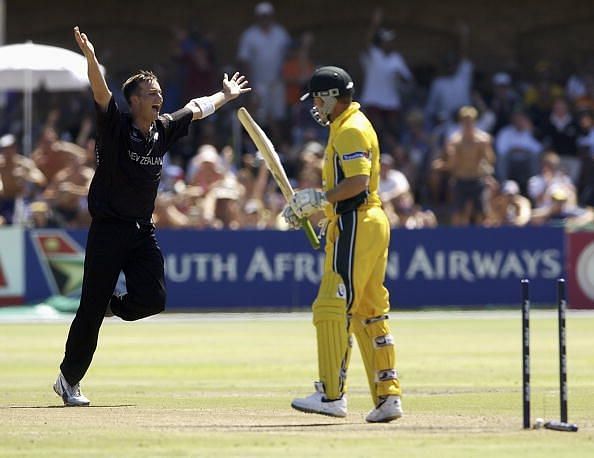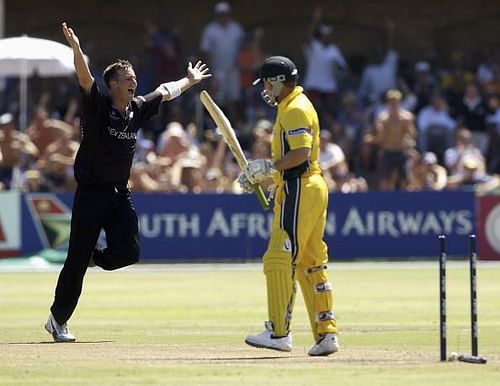
SK Flashback: Bond with Lee spells danger for batsmen in 2003 World Cup
A clash between two-speed merchants can be an electrifying sight. At the 2003 World Cup, there was one such instance, with two fast bowlers straining to outdo the other. The hapless wielders of the willow kept ruing their fate on this day.

The St. George’s Park track was criticized for being slow, but two of the three fastest bowlers in the world took more than half the wickets on it. It’s all about putting the ball in the right place, said one of their tribe, Glenn McGrath. That is what Shane Bond and Brett Lee did in their fiery bursts, leaving the batsmen scorched and bruised.
A late bloomer, the 27-year-old Bond made rapid strides since he burst on the international scene in January 2002. He played a huge role in bundling Australia out from the ODI triangular series in his debut season.
Returning to the fray in the World Cup after a foot injury, he was again the nemesis of the reigning champions, whom Stephen Fleming put in on a slightly damp wicket. As Bond steamed in, the out-of-touch Matthew Hayden fidgeted for a while and then nicked one to Brendon McCullum behind the stumps.
Adam Gilchrist fired awhile before Bond rapped him on the pads right in front of the stumps. Bond had harangued Ricky Ponting on more than one occasion in the past and this time too he did not let the Australian captain settle down, getting him caught by Fleming.
Andre Adams intruded into Bond’s wicket-taking streak by picking up Darren Lehmann. Then Bond ended Damien Martyn’s brief resistance, having him caught at the wicket, after which he trapped Brad Hogg leg-before first ball.
He knocked back Ian Harvey’s stumps, leaving the Trans-Tasman neighbors reeling at 84 for seven by the 27th over. But in the process he also completed his quota of 10 overs, and Michael Bevan and Andy Bichel dug in for the second time in the tournament to bail Australia out.
Bond’s six for 23 were the best figures for New Zealand in ODIs, ahead of Scott Styris’ six for 25 against the West Indies in 2002, and Richard Hadlee’s World Cup analysis of five for 25 against Sri Lanka in 1983.
While Lee was hit for 31 runs in his opening spell of five overs, McGrath picked up three early wickets. But Lee came back with a vengeance in the 23rd over to scythe through the lower half of the New Zealand batting as the ball began to reverse swing.
He forced top-scorer Fleming to top-edge a hook to Gilchrist. A lethal yorker thudded into the pads of McCullum, and another thunderbolt went through Jacob Oram, crashing into his stumps first ball.
Lee was on a hat-trick in the next over but was denied by Adams. Next ball, however, he castled the batsman, grabbing his third wicket in four balls. He ended the innings by taking a theatrical return catch off Bond’s bat.
Lee snatched five for 11 in his second spell of 4.1 overs, his first five-wicket haul in the World Cup. New Zealand folded for 112, their lowest-ever total in the premier event, and slumped to a 96-run defeat.
The two speedsters bowled at searing pace, but it was Bond who was awarded the man-of-the-match prize for rocking the champions. He had asserted his dominance over them once again, in a stretch that saw him capture 22 wickets in six matches, including two stints of five wickets, and one of four wickets.
Bond endeared himself to the cricket world with his smooth action, and even though his team lost, he stole the thunder from the faster Lee.
Australia: 208 for 9 wickets (50 overs), New Zealand 112 all out (30.1 overs) (CWC 2003)
Follow Sportskeeda for all the updates on ICC World Cup, schedule, news, points table, live score, most runs, most wickets and fantasy tips.